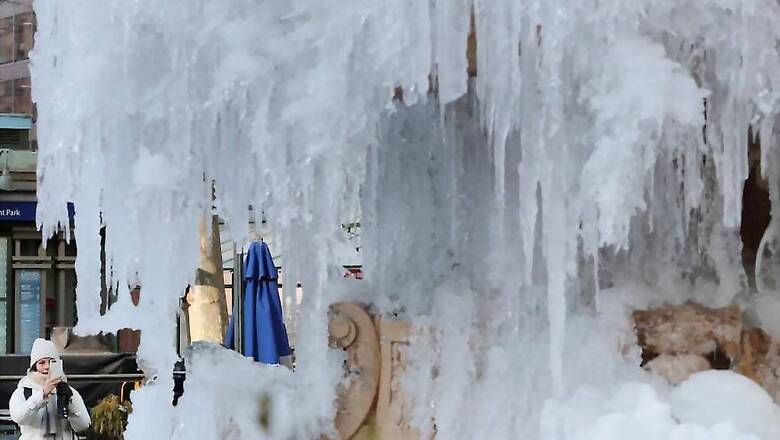
views
New Delhi: The record breaking heat of 2016, and the extreme weather events that happened that year, would not have been possible without climate change created by human activity, new studies have said. Climate scientists have, for the first time, proved that the “extreme magnitude of a particular weather event”, such as the heat wave that hit southern India, killing 580 people in three months, and other parts of southeast Asia, would never have happened without “anthropogenic warming”.
The latest year-end Bulletin of the American Meteorological Society (BAMS) examined the impact of human caused-climate change on events such as the 2016 record heat, heat waves across Asia, and a marine heatwave off the Alaskan coast. The Bulletin says that climate scientists long predicted that they’d first observe this phenomenon for heat events, as that is where “climate change influence is most pronounced”.
2016 saw temperatures hitting 51 degrees celsius in Rajasthan and 44.6 degrees celsius in Thailand; it was the third year for the patch of warm water, nicknamed The Blob, in the Gulf of Alaska and the Bering Sea which has been killing marine life -- seagulls, sea lions, otters, etc. Though natural variability plays an important role in driving temperatures up, the three studies in BAMS concluded that the scale of such events were “not possible in the ‘control’ planet, and only possible in a world with human-emitted greenhouse gases.”
A control plant, in the models run by the studies, is one which only has natural climate processes and ignores changes to atmospheric conditions driven by human greenhouse gas emissions.
The study on the global rise in temperatures, ran seven simulation models of 24,000 years of weather, to show that the warmth of 2016 was well outside of natural processes. As an editorial in these science journal Nature noted, “nothing like the record warmth of 2016 ever occurred”.
The study also shows that greenhouse gas emissions started influencing climate beyond the realm of natural variability around 1980.
“At the global scale, the natural variations of earth’s temperature are increasingly seen to pale in comparison to the growing intensity of human-induced warming,” read the Bulletin.
The study on Asia concluded, “All of the risk of the extremely high temperatures over Asia in 2016 can be attributed to anthropogenic warming.”
Nature’s editorial hit on the importance of these studies, the “confident assertion” that “rarely makes its way into the scientific literature”.
“Basic theory suggests that climate change will lead to more extreme weather, but making the link to individual events is difficult,” said Nature adding, “There was a time when the typical answer was something along the lines of, ‘Perhaps, but it’s hard to say.’
Now, the blame for such extreme weather “would rest squarely on our own shoulders.




















Comments
0 comment